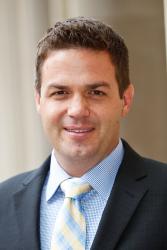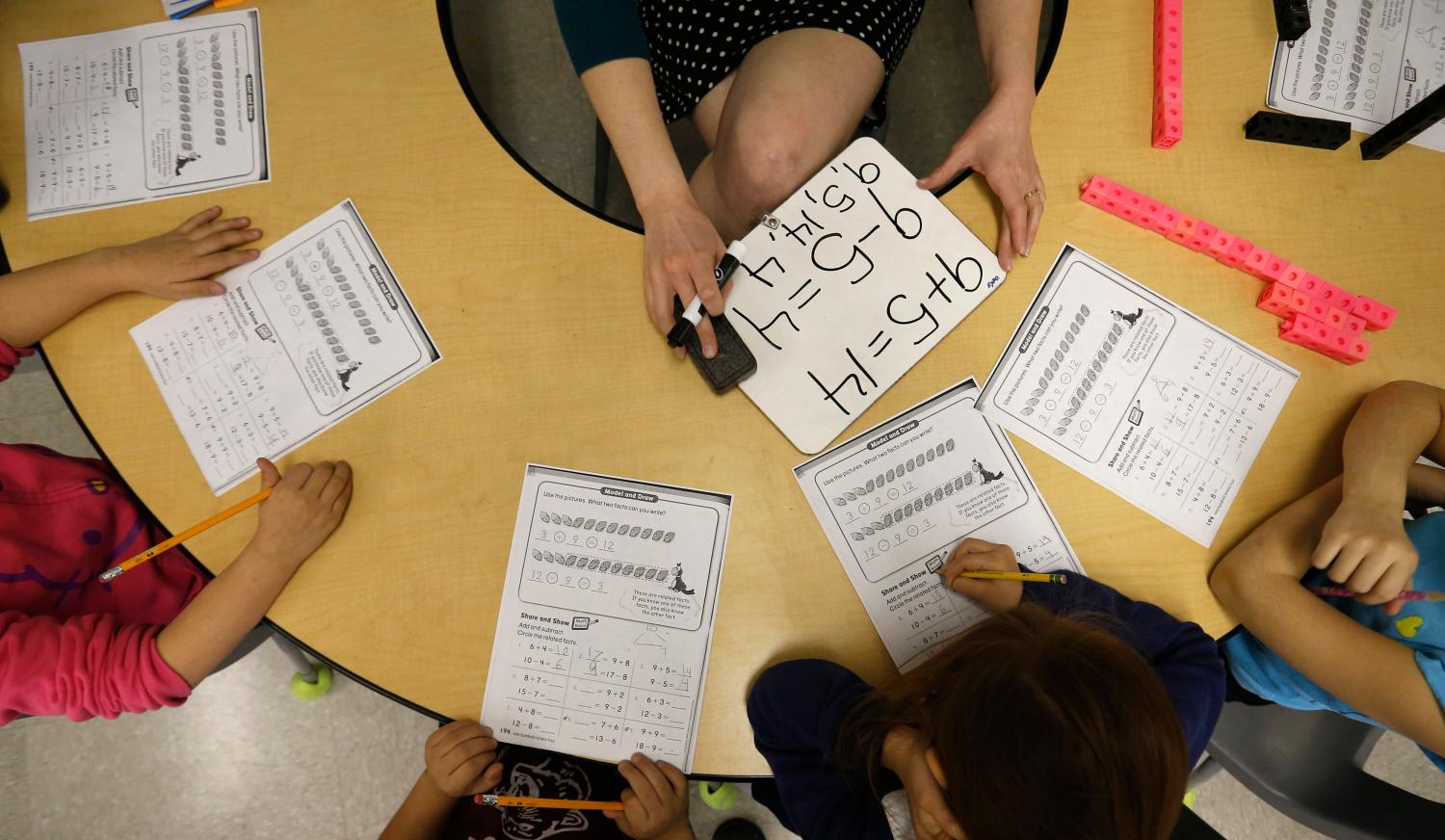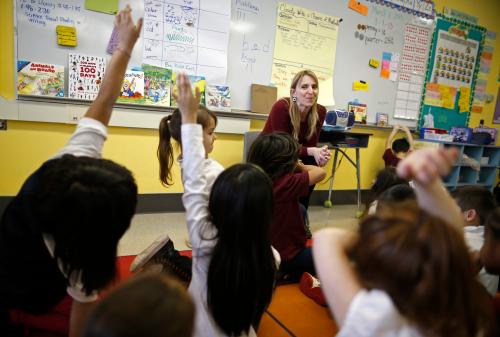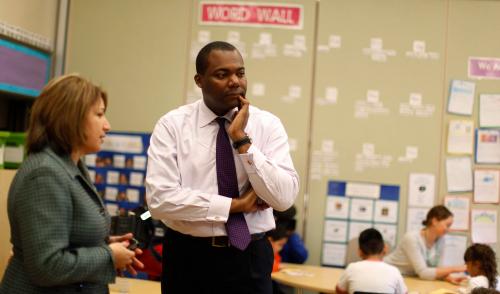This post is part of “Teacher diversity in America,” a series from the Brown Center on Education Policy that examines minority underrepresentation among public educators in the U.S.
The public teacher workforce has been slowly growing more racially diverse over the last three decades. A notable study from Richard Ingersoll and Lisa Merrill finds the number of teachers of color more than doubled between 1987 and 2012, resulting in the share of nonwhite teachers in America’s public schools expanding from 12 to 17 percent over that same period. More current survey results from 2016 show the share of nonwhite teachers has jumped even higher, nearing 20 percent.
These rather encouraging trend lines may lead observers to conclude that public schools are successfully attracting an increasingly larger share of people of color into the teaching profession—whatever we’re doing, we’re moving in the right direction. And though this conclusion seems reasonable, it runs counter to what the underlying data tells us about racial underrepresentation among the teacher workforce.
In this installment of our ongoing teacher diversity series, we examine the racial diversity of the teacher workforce looking across different generations of teachers. For readers following this series, our analysis here is part of our contribution to the forthcoming Handbook of Research on Teachers of Color, edited by Conra Gist and Travis Bristol (expected publication: Spring 2020)—a volume that should also be of interest.
In this piece, we analyze national survey data spanning 25 years and arrive at a counterintuitive finding: The public teaching profession is growing disproportionately white over time. In other words, we see very worrying trends about racial diversity that have been decades in the making. If states and districts are taking teacher diversity seriously, the following analysis should be a wake-up call that much more needs to be done to promote more racial diversity in schools.
Worrying signs forming
Though the general teacher diversity trend has been steadily moving upwards for decades, two recent studies offer a different interpretation on the same trends, casting doubt on whether the teacher workforce will become sufficiently diverse.
First, a study we published with co-authors Hannah Putman and Kate Walsh in 2016 estimated the racial/ethnic breakdown of both the teacher workforce and the student population through the year 2060 based on U.S. Census projections. In that report, we estimated that the change in student demographics will evolve at a slightly higher rate than the expected shift in the teacher workforce demographics. This means the underrepresentation of teachers of color will likely persist or even grow in the coming decades (most likely among Hispanic teachers).
A second analysis included in Millennial Teachers of Color, an edited volume published last year, examined teacher diversity across generational cohorts and found that millennial teachers are actually less diverse than their baby boomer and Generation X peers. In particular, the share of white teachers among millennial teachers is noticeably higher than the white share among prior generations, and the most notable declines observed across generations are among black teachers (based on data from the 2012 Schools and Staffing Survey). The irony here is that millennials are well documented to be the most diverse of these generations that preceded them into the workforce.
An apples-to-apples comparison of diversity
So, is diversity among up-and-coming millennial teachers falling behind while diversity among the overall workforce moves ahead? These contradictory interpretations of diversity trends across studies piqued our interest, compelling us to dig a little deeper.
The lower racial diversity documented among millennials may be counterintuitive, but we should be quick to note that this detail may not be indicative of a long-term trend. In fact, lower levels of diversity could be expected at this relatively early stage of the youngest generation’s careers. We know teachers of color enter the profession through non-traditional routes, mainly alternative certification programs. In addition, nonwhite demographic groups are more likely to graduate from college within five to six years, rather than four years, which could also have a role in delaying the entry of teachers of color into the profession. We checked the 2016 National Teacher and Principal Survey, which confirms that the average entry age among teachers of color is more than a year older (29.8) than that among white teachers (28.4).
In other words, a single snapshot of survey data does not provide an apples-to-apples comparison of generational diversity. Such a comparison positions mid-career Generation X teachers and late-career baby boomers (systematically more diverse) against novice millennials (systematically less diverse). It may be possible millennials’ diversity will catch up with age, but they lag behind now.
Instead of using surveys at single points in time, a more insightful way to explore teacher diversity across generations is to examine the share of nonwhite teachers at specific ages. Tracing this age-diversity profile by generation will help us to see the actual trend of teacher diversity as each generation ages.
To do this, we use six waves of the American Community Survey between 1990 and 2015 to examine the racial and ethnic diversity of public school teachers over this 25-year period.[1] We classify each teacher into a generation according to their year of birth: Baby boomers (teachers who were born between 1946 and 1964), Generation X (teachers who were born between 1965 and 1979), and millennials (teachers who were born between 1980 and 1996).[2] We calculate the percentage of nonwhite teachers across all surveys for each generation and age and present our results in the left panel of Figure 1 below. Additionally, we replicate this procedure, identifying the nonwhite share of each generation for all full-time college-educated workers (excluding teachers) and use it as a comparison against the teacher data (see right panel).
Adjusting the generational trends this way, we observe three notable findings.
- Regardless of the generation, the population of teachers is less racially diverse at entry into teaching, and becomes increasingly more diverse as generations age, consistent with our expectations as we described above. Interestingly, diversity among teachers appears to reach a peak in the late 30s or early 40s among prior generations. Where this peak might occur for millennials is currently unclear (the oldest millennials are only now in their late 30s).
- Tracing out the age-diversity profile as shown in Figure 1 clearly shows the millennial generation is virtually identical to the diversity of Generation X teachers at every observable age of the cohort. This is slightly more encouraging than the findings discussed earlier of lower racial diversity among millennials.
- Teachers are becoming less representative of the population as a whole. Looking to the profile of college-educated workers on the right panel of Figure 1, it is clear each successive generation outside of the teaching profession has grown more racially diverse by sizable leaps; this is a sharp contrast to the modest (and now perhaps even stalled) progress we see among teachers in the left panel.
To illustrate this third finding more forcefully, in Figure 2 below we plot the difference between the percent of nonwhite college-educated workers (the right panel of Figure 1) and the percent of nonwhite teachers (the left panel of Figure 1). In other words, this figure quantifies how much more white the teacher workforce is than the college-educated workforce from which teachers are drawn for each generation.
Figure 2 clearly shows each of the teacher generations is more white than the corresponding college-educated workforce. Yet, worryingly, the millennial generation of teachers is the most racially underrepresented generation of the three. On average, the share of white teachers in the overall workforce is more than 10 percentage points larger than the share of whites among non-teaching college-educated workers. For Generation X and baby boomers, this difference is 7 and 3 percentage points, respectively.
Diversity falling behind while moving ahead
We should pause briefly to reconcile these different interpretations of diversity trends. We began our discussion with Ingersoll & Merrill’s well-known result showing the U.S. teacher workforce has grown steadily more diverse since the late 1980s. We do not dispute that fact; rather, we dispute the interpretation that often accompanies this trend that alleges teaching is slowly becoming more attractive to teachers of color. Our analysis counters that allegation, showing the teaching profession is growing comparatively less diverse than the population of college-educated workers from which it draws talent.
Stated differently, the decades-long increases in racial diversity are more due to the fact that Generation X and millennials in general are more diverse than prior generations, not because schools are getting better at attracting and retaining teachers of color. In reality, teaching has grown slowly less attractive to people of color, as evidenced by the larger diversity gaps across generations.
In our view, these results should be alarming to states and districts taking teacher diversity seriously. Rather than offering a perspective of slow but steady improvement, the analysis here shows the underrepresentation of teachers of color is a trend that has actually been growing more acute for decades. This tells us that the aspiration to create a teacher workforce that is representative of the students they serve is an even more ambitious goal than previously believed.
Footnotes
- We define public school teachers as full-time teachers (preschool, elementary, secondary, special education teachers, and other teachers and instructors) working in elementary or secondary schools who are employed by the federal, state or local government and were between 23 and 65 years old at the moment of the survey. The final sample is comprised of 68,469 teachers in 1990; 88,210 teachers in 2000; 9,931 teachers in 2003; 24,161 teachers in 2007; 26,520 teachers in 2011; and 26,101 teachers in 2015.
- There is not a clear consensus on when the millennial generation starts. Some demographers define the millennial generation as those who were born between 1982 and 1994, while in other reports the millennial generation starts as early as 1980. We go with the earlier start date, though our results are not sensitive to this choice.
The Brookings Institution is committed to quality, independence, and impact.
We are supported by a diverse array of funders. In line with our values and policies, each Brookings publication represents the sole views of its author(s).












